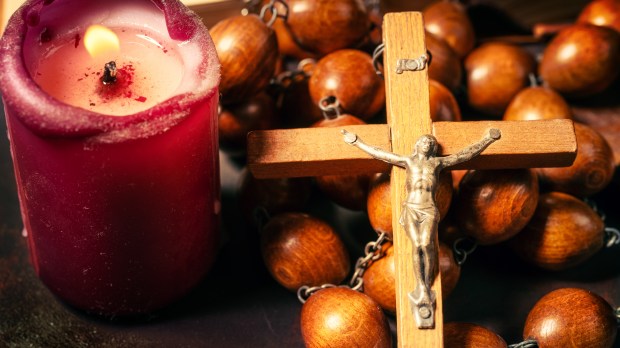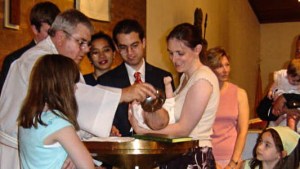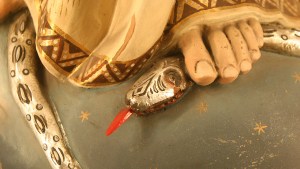Many people are familiar with the life of St. Padre Pio, who lived and is entombed in San Giovanni Rotondo, in the Gargano Mountains. However, there is another holy Capuchin saint who lived in the same area: Fr. Matteo d’Agnone.
Fr. Matteo is a 16th-century priest who has been declared Servant of God, and his cause of beatification is underway.
Though little known in the English speaking world, he was endowed with numerous spiritual gifts and charisms. In particular, he had the spirit of prophecy and spiritual discernment, the grace of profound prayer during which he often went into ecstasy, and charity toward the poor and the sick for whom he worked miracles.
However, he is most known for his charism of casting out demons. In fact, he is considered one of the most powerful exorcists in the history of the Church. Throughout his life, it is estimated that Fr. Matteo d’Agnone freed some 650 souls suffering from some degree of demonic influence.
Born on November 30, 1563, he was baptized with the name Prospero Lolli. When he was still an adolescent, he was involved in an incident in which a companion was shot and killed with his father’s antique firearm. After fleeing to Naples, he attended the storied university to study philosophy and medicine.
Gift and call
There, he decided to become a Franciscan priest. He chose the Capuchin Order, a reform movement conceived some 30 years earlier as a penitential and hermitical order. His religious name given was Matteo (Matthew), which means “gift of God.”
He was ordained a priest in Bologna on September 20, 1587. Just before ordination, his extraordinary charism of exorcism and liberation was revealed.
While the other priests were carrying out an exorcism, the demon revealed that he could not bear the humility of Fra Matteo d’Agnone. In fact, as soon as the priest approached the woman, she was freed.
After ordination, he was transferred to the Capuchin province of Foggia, where he served as local and provincial minister. He became well-known as a virtuous and learned teacher and powerful preacher.
He distinguished himself for his devotion to Our Lady, and his staunch support of the Assumption of Mary four centuries before the dogma was proclaimed by Pope Pius XII in 1950.
Throughout his life, he suffered from numerous physical pains and maladies, for which he thanked the Lord, offering them up for the salvation of souls.
He died in the convent of Serracapriola, near Foggia, on October 31, 1616, and is interred there.
Continued devotion
Many pilgrims to his tomb in Foggia (30 kilometers/20 miles from San Giovanni Rotondo) have reported receiving graces and even miracles.
Remarkably, those suffering from demonic obsession or possession have reported healings by praying for his intercession.
Though demonic influence and the ministry of exorcism is sometimes misunderstood – by the faithful as well as those outside the Church – the Catholic Church authorizes the sacramental of exorcism for those who are believed to be the victims of demonic possession.
The Catechism of the Catholic Church states the following:
When the Church asks publicly and authoritatively in the name of Jesus Christ that a person or object be protected against the power of the Evil One and withdrawn from his dominion, it is called exorcism. […] The solemn exorcism, called “a major exorcism,” can be performed only by a priest and with the permission of the bishop. The priest must proceed with prudence, strictly observing the rules established by the Church. Exorcism is directed at the expulsion of demons or to the liberation from demonic possession through the spiritual authority which Jesus entrusted to his Church. Illness, especially psychological illness, is a very different matter; treating this is the concern of medical science. Therefore, before an exorcism is performed, it is important to ascertain that one is dealing with the presence of the Evil One, and not an illness.
(see CCC 1673).



